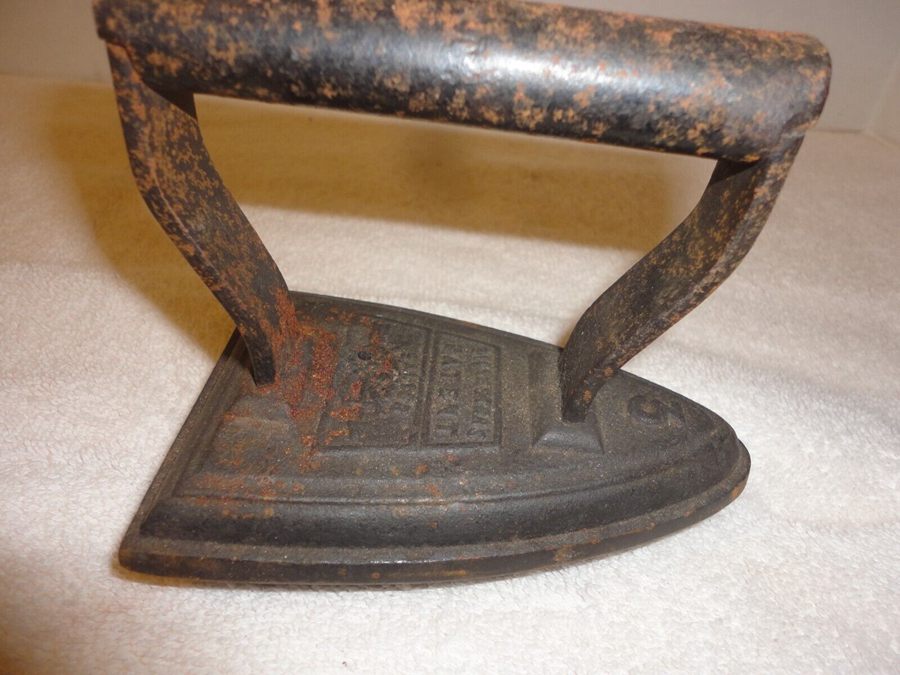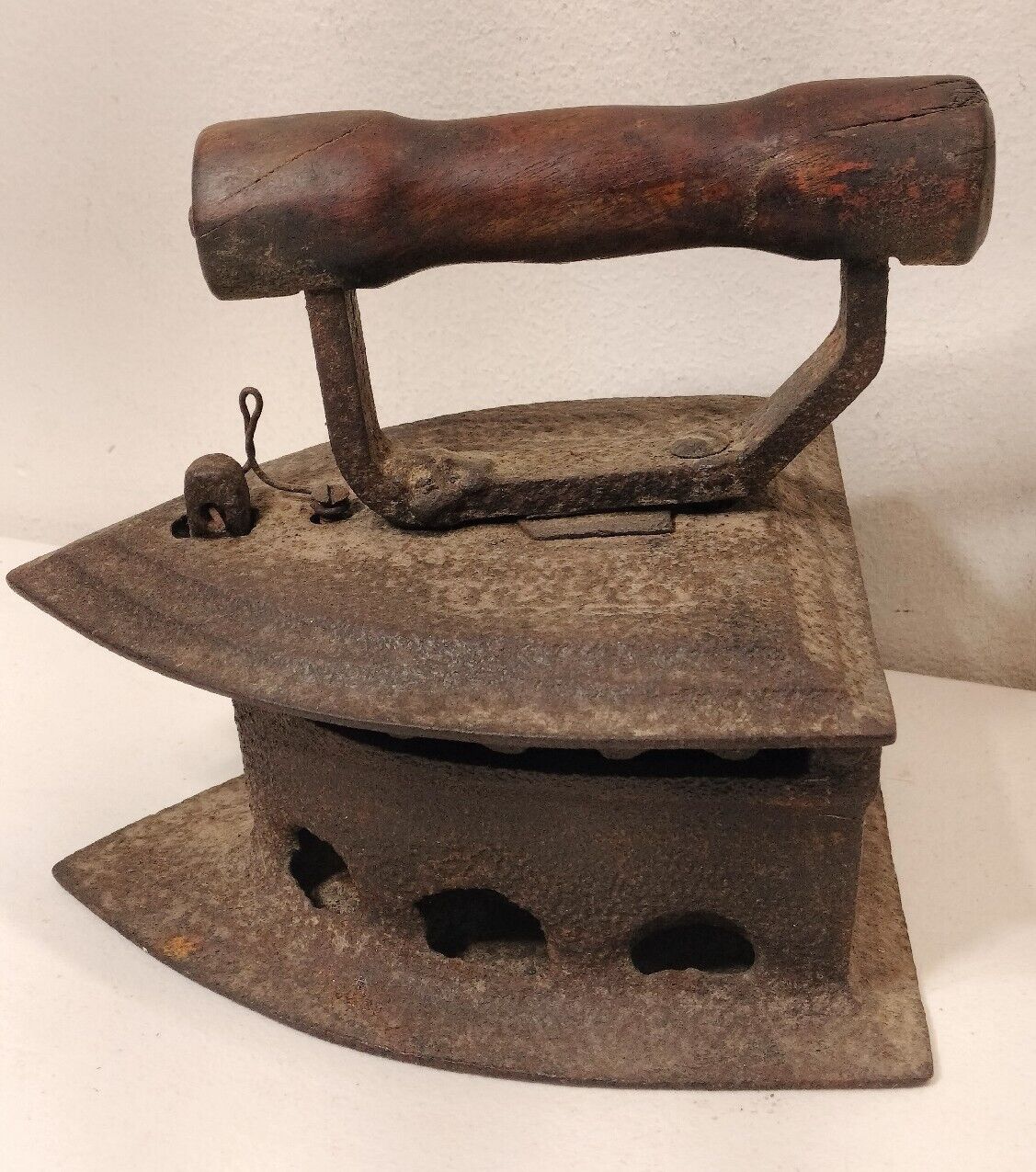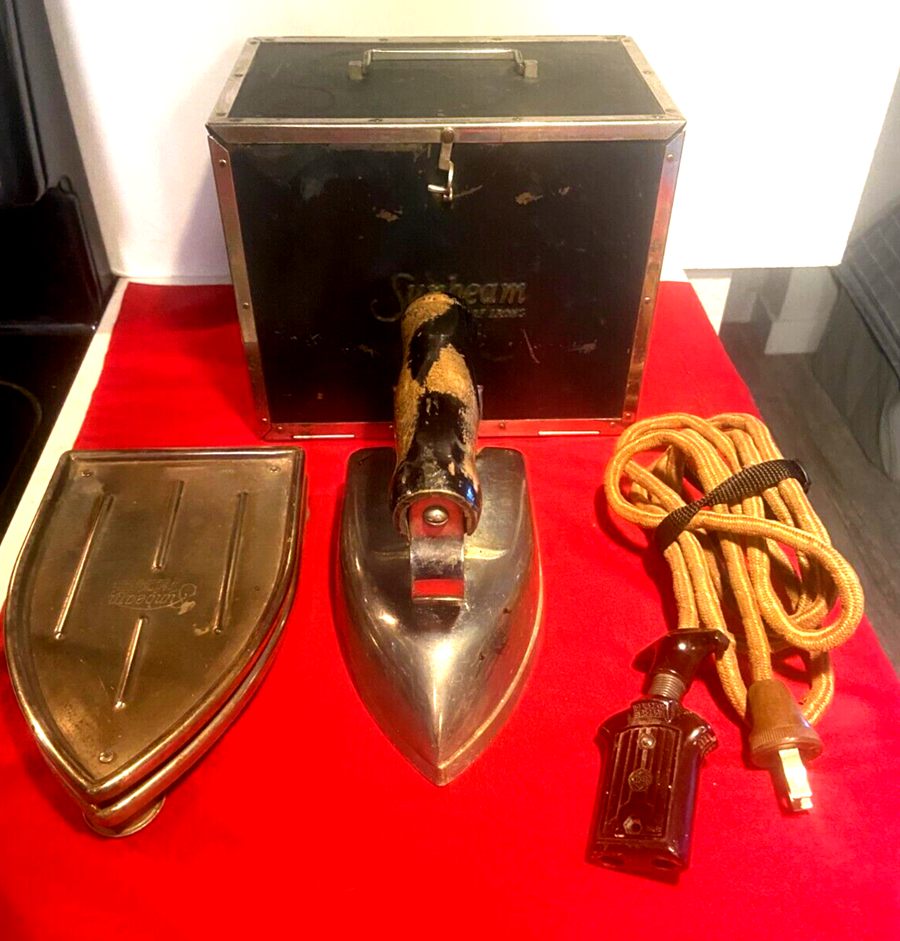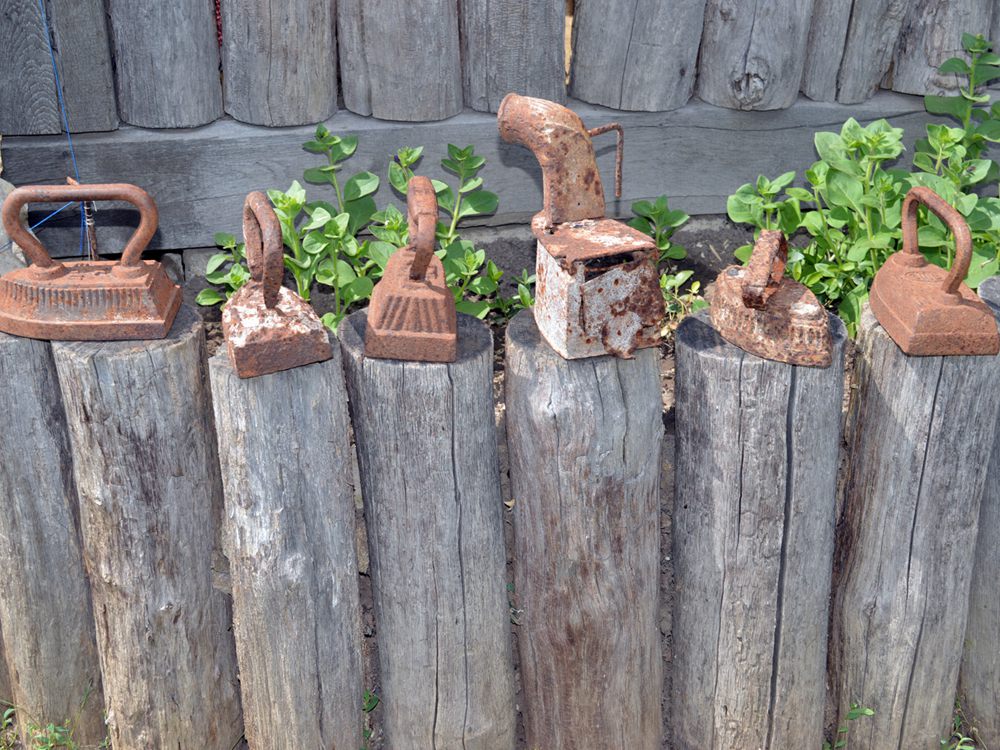Antique sad irons, also known as flat irons or smoothing irons, are an essential part of history that showcase the evolution of everyday household items. As you delve into the world of antique sad irons, understanding their identification and value becomes crucial for collectors and enthusiasts. These unique tools were widely used from the 17th century throughout Europe, with the term ‘sad’ being an old English word for ‘solid.’
In this article, you will explore the different types of antique sad irons, their markings, and the factors that contribute to their value. From aesthetic appeal to historical significance, learning the intricacies of these fascinating items will elevate your appreciation for their place in history. As you continue on your journey of discovery, remember that rarity, condition, and provenance play key roles in determining the value of each antique, ensuring that your collection remains both impressive and valuable.
Table of Contents
The History & Evolution of Antique Sad Irons
During the 19th century, sad irons were common household items used primarily for pressing clothes. To understand where the term “sad iron” comes from, let’s explore its origins. The word “sad” in this context is derived from an Old English word meaning “heavy” or “solid.” These irons were constructed of a single piece of cast iron, and they were indeed heavy, typically weighing between 5 and 10 pounds.
In the early days of their use, sad irons needed to be heated on a stove or over an open fire. You might have used a “slickenstone” or “slicken,” a smooth stone or piece of glass, to cool the iron before applying it to clothing. This process required multiple irons, as one would heat up while another was in use to maintain the necessary temperature for effective pressing.
As time went on, various improvements were made in the design of sad irons. Some of the notable innovations included:
- Box Irons: These irons had a compartment for hot coals or other heating elements, allowing the iron to maintain heat more effectively.
- Asbestos Irons: Featuring an outer layer of asbestos, these models aimed to provide better insulation and keep the iron’s handle from becoming too hot to touch.
- Gas Irons: Utilizing gas as a fuel source, these irons offered a much cleaner and more efficient method than their earlier counterparts.
The evolution of sad irons eventually led to the invention of the electric iron in the early 20th century. Today, such antique sad irons often hold a nostalgic and historical value, as they serve as a reminder of the innovations that shaped modern-day appliances and domestic life.
When it comes to identifying and valuing these antique sad irons, it’s essential to consider factors such as age, condition, rarity, and the presence of unique features or markings. As a general guide, notable and rarer designs typically command higher prices in the collector’s market.
How to Tell if a Sad Iron is Antique or Old
To determine if your Sad Iron is antique or old, start by observing its features. Check for any inscriptions or markings on the iron, as these may provide important information about its age. Look for unique design elements on the handle or body of the iron, as certain styles are indicative of specific time periods.
When examining a Sad Iron, pay close attention to the handle. Detached handles, stamped rivets, and carved holders are signs of an 1800s iron. Additionally, if the iron has a half-hand and machine body, it likely dates back to the 19th century and can be valued at around $500-600. The handle’s design can also help determine its age; goose-neck or geometrical handles suggest an older piece and can increase its value by 3-4%.
Further recognition of the types of antique irons helps in identifying their era. Some of the common antique irons include:
- The French Iron
- The Meta-Fuel Iron
- The Gaslighter Iron
- The Belgium Box/Slug Iron
- The Child-Iron Size
- The Cap Iron
- The Brim Iron
- The Swan Iron
The term “sad” in sad iron stands for solid, and in some contexts, it suggests a heavier and larger iron than a typical flat iron. Another name for these antique irons is “goose” or “tailor’s goose,” due to the goose-neck curve in some handles. In Scotland, they are referred to as “gusing (goosing) irons.”
Remember not to make any exaggerated or false claims when determining the age of your Sad Iron. Use a confident and knowledgeable approach to analyze the features, and rely on neutral and clear observations.
4 Types of Antique Sad Irons and Their Values
Flat Irons

Flat irons, also called sad irons, are the heaviest and most common types of antique irons, usually weighing 5 to 9 pounds. They have a triangular or pointed shape, which makes it easier to iron around buttons. According to Collectors Weekly, the term “sad” comes from Old English, meaning “solid.” Flat irons are the forebears of modern electric irons.
Values:
- 2 Vintage Cast Iron Sad Iron Trivets: $18.00
- Antique Sad Iron No. 1 W. H. Howell Co: $24.95
Box Irons

Box irons are another type of antique irons, also known as Belgium Box or Slug Iron. These irons contain a removable metal slug that is heated separately and then placed inside the iron to keep it hot while in use. Box irons were popular in Europe in the 18th and 19th centuries.
Values:
- There is no specific pricing information found for box irons, but their value is often determined by factors such as rarity, condition, and age.
Charcoal Irons

Charcoal irons have a unique and distinctive design, with a hollow chamber where burning charcoal is placed. The heated charcoal transfers heat to the iron, allowing it to remain hot. Charcoal irons were widely used in both urban and rural areas worldwide until the introduction of the electric iron.
Values:
- 1 large charcoal fill – heated sad iron: included in a set of 4 vintage early 1900’s cast sad irons which includes Asbestos 72-B variants, implying charcoal irons are priced similarly to flat irons.
Electric Irons

Electric irons are a more recent addition to the world of ironing, introduced in the early 20th century. These irons use electricity to heat their metal plates, making ironing more efficient and allowing for better temperature control. Although antique electric irons are not as old or valuable as other types of irons, they still hold importance in the history of ironing and can be a valuable addition to any collection.
Values:
- ANTIQUE GAS POWERED SAD IRON PRESS ROYAL IRON Co. MODEL-D Early 1900’s: $21.00 (This price is for an antique gas-powered iron which is expected to have a similar value to early electric irons)
Keep in mind that these values are not definitive and can vary based on the specific item, its condition, and rarity. Always consult specialized sources or experts in the field to determine the value of an antique sad iron accurately.
8 Factors to Identify & Value Antique Sad Irons
Age
When determining the value of an antique sad iron, one of the first factors to consider is its age. Older pieces typically hold more historical value and usually command higher prices. To identify the age, look for clues such as manufacture dates, design elements, or patent information.
Maker’s Mark
Maker’s marks are another essential identifier. These marks can be found on most sad irons. Be sure to research the maker to learn more about their history and reputation. Familiarize yourself with renowned makers and their specific markings.
Rarity
Rarity is a crucial factor in the value of sad irons. Unique examples will be more valuable than mass-produced counterparts. Examine the sad iron for unique design features, limited editions, or innovative functions that might make it rare.
Condition
The condition of your sad iron has a significant impact on its value. Examine it carefully for cracks, chips, rust, or any other damages that could detract from its appearance or functionality. If possible, compare your piece to other similar sad irons to gauge its relative condition.
Material
The material used in the construction of a sad iron can offer essential clues about its age and rarity. Some materials that were commonly used are cast iron, brass, and copper. A thorough understanding of the various materials used historically is crucial when evaluating the value of a sad iron.
Weight
The weight of a sad iron can provide valuable information on its age and period of manufacture. Heavier pieces are often older, while lighter-weight models are indicative of more modern manufacturing techniques.
| Era | Weight Range |
|---|---|
| Early 18th Century | 6-8 lbs |
| Late 19th Century | 4-6 lbs |
| Early 20th Century | 2-4 lbs |
Size
The size of a sad iron could also affect its value. Smaller, travel-sized sad irons can be more sought-after by collectors, while larger, unusual-sized irons could signify rarity or specialized use.
Antique Sad Iron Handle Shape
The shape of the handle often indicates the age and function of an antique sad iron. For example, early sad irons had simple straight handles, while later models featured detachable or swiveling wooden handles to protect the user from heat.
Styles
Finally, consider the various styles of vintage sad irons that existed over the years. Some popular styles include:
- Box irons: These are hollow and hold hot charcoal or embers to heat the ironing surface.
- Slug irons: These have a removable core filled with hot coals or a heated slug inserted into the body.
- Tailor’s irons: These are specifically designed for tailors to press seams and creases in clothing.
Understanding the different factors that influence the value of an antique sad iron will help you accurately assess its worth and make informed decisions when buying, selling, or collecting these fascinating pieces.
Final Thoughts
When identifying and valuing antique sad irons, pay attention to the key details that distinguish them from other irons. Some of the critical aspects to consider are the detached handles, stamped rivets, and carved holders. Moreover, half-hand and machine bodies can be a helpful suggestion that your sad iron might be from the 1800s, with a potential value of $500 – $600.
Additionally, check the handles for unique features like goose-neck or geometrical shapes. These designs can increase the value by 3 – 4%. Remember, 19th-century sad irons were quite heavy, averaging around five to nine pounds. The added weight can serve as another helpful indicator when identifying antique irons.
Trivets, used to protect fabrics and surfaces from burning, were often paired with sad irons. They can provide collectible examples of metalwork with intricate designs. Pay attention to these trivets as they can enhance the overall value of your sad iron collection.
Finally, keep in mind that the earliest metal flat irons were forged by blacksmiths during the Middle Ages, which can give you a perspective on the historical significance of your antique sad irons. As you continue your research and develop your expertise in this fascinating area of collectibles, you’ll become more proficient in identifying valuable pieces and expanding your collection.
FAQ
How can I identify an antique sad iron?
To identify an antique sad iron, you can look for the following features:
- Date & Age: Most antique sad irons are from the late 19th and early 20th century and were used before electric irons became popular.
- Handle Shape: Handle shapes may vary, with some antique sad irons having straight, curved, or ornate handles.
- Handle Materials: Many vintage sad iron handles were made of wood (like those patented by Mary F. Potts) as a way to avoid burns.
- Brands: Some old sad iron brands you may encounter include Mrs. Potts, Geneva, and Dover.
What factors affect the value of antique sad irons?
Some factors that affect the value of antique sad irons include:
- Rarity: Uncommon styles and models are
- Condition: A well-preserved sad iron generally has a higher value.
- Maker or brand: Certain makers or brands can be more sought after by collectors.
- Unique features: Sad irons with unique features, such as ornate designs, can be more valuable.
How do I clean a rusty sad iron?
To clean a rusty sad iron, follow these steps:
- Fill a container with white vinegar and submerge the rusted parts in the vinegar.
- Let the iron soak for 24 hours.
- Remove the iron from the vinegar and scrub off the rust with a wire brush or steel wool.
- Rinse the iron with water and thoroughly dry it with a clean cloth.
- Apply a coating of mineral oil to protect the iron from further rusting.
When did makers stop making antique sad irons?
Makers of antique sad irons gradually stopped producing them around the mid-20th century when electric irons became popular and widely available.
Why is a sad iron called “sad”?
The term “sad” in sad iron comes from the Old English word for “solid.” It refers to the solid, heavy nature of these irons that were heated near an open fire or on a stove.









